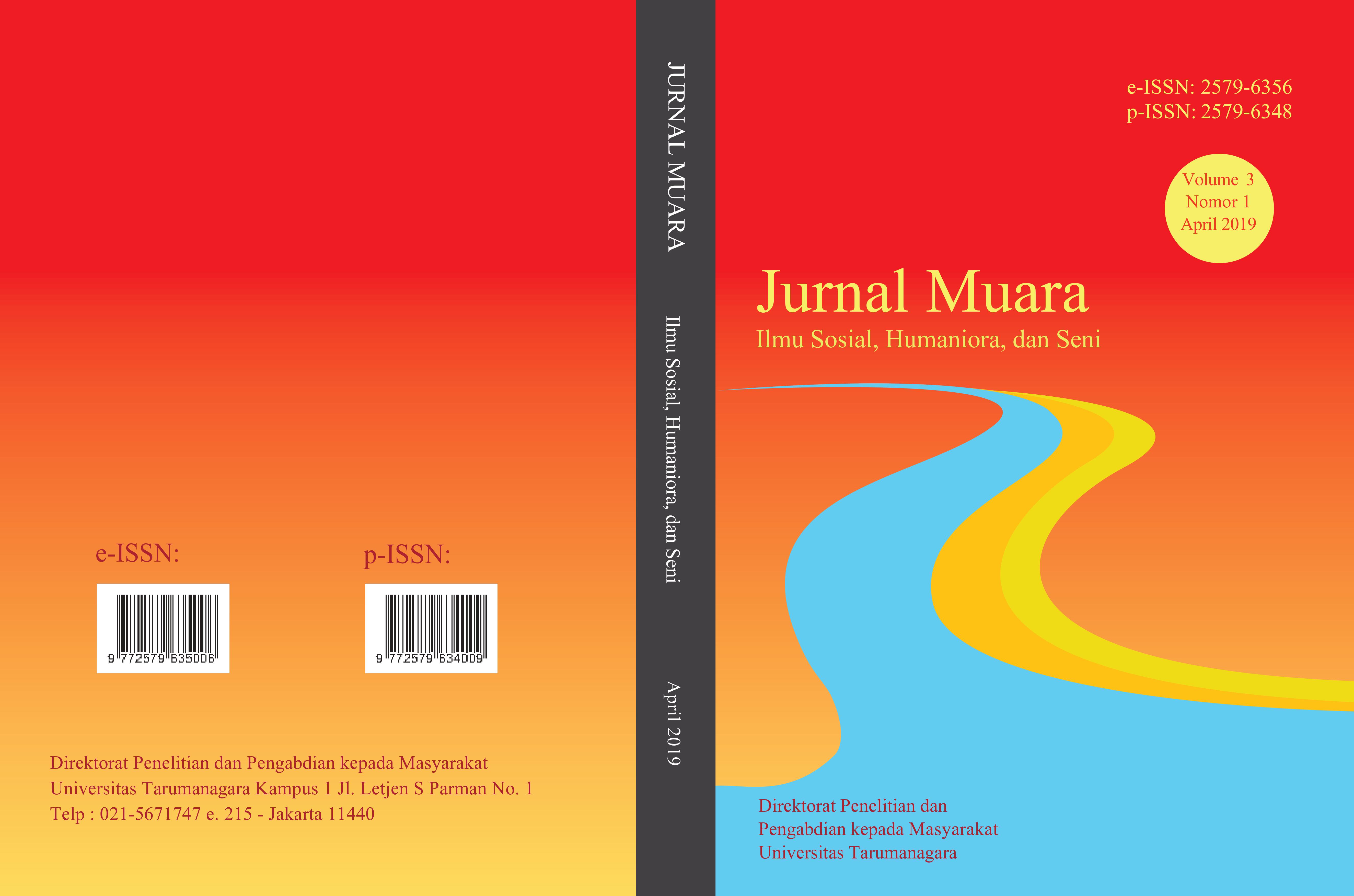HUBUNGAN PSYCHOLOGICAL DISTRESS DAN KARAKTERISTIK INDIVIDU, KELUARGA DAN LINGKUNGAN KERJA PADA TENAGA KERJA WANITA (TKW) INDONESIA DI TAIWAN
Main Article Content
Abstract
Belum banyak upaya dilakukan untuk mengetahui kesehatan mental tenaga kerja wanita yang berada di luar negeri. Penelitian ini bertujuan untuk melihat gambaran dan faktor-faktor yang berhubungan dengan kesehatan kesehatan mental pada Tenaga Kerja Indonesia yang bekerja di Taiwan. Data diambil menggunakan metode kuantitatif dengan alat ukur the Hopkins Symptoms Checklist-25 (HSCL-25) untuk mengetahui tingkat distres psikologis dan pertanyaan mengenai karakteristik sosiodemografik. Partisipan penelitian ini adalah 181 tenaga kerja wanita Indonesia yang sudah bekerja di Taiwan selama minimal enam bulan, dikumpulkan dengan teknik convenience sampling dan snowball sampling. Berdasarkan penghitungan statistik, sebanyak 17% dari total partisipan mengalami gejala depresi dan kecemasan. Dari uji hipotesis, diketahui terdapat hubungan positif signifikan antara distres psikologis dan komunikasi rutin dengan keluarga, keaktifan di komunitas, dan alasan kerja untuk mencari kesempatan lebih baik.
Little effort has been made to find out the mental health of women workers who are abroad. This study aims to look at the picture and factors related to mental health health in Indonesian Workers who work in Taiwan. Data were collected using quantitative methods using the Hopkins Symptoms Checklist-25 (HSCL-25) to determine the level of psychological distress and questions about sociodemographic characteristics. The participants of this study were 181 Indonesian female workers who had worked in Taiwan for a minimum of six months, collected using convenience sampling and snowball sampling techniques. Based on statistical calculations, as many as 17% of the total participants experienced symptoms of depression and anxiety. From the hypothesis test, it is known that there is a significant positive relationship between psychological distress and routine communication with family, activity in the community, and the reasons for work to look for better opportunities.
Article Details
References
Bhugra, D. (2004). Migration and mental health. Acta Psychiatrica Scandinavica, 109(4), 243-258.
Chin, C. B. N. (1997). Walls of Silence and Late Twentieth Century Representations of the Foreign Female Domestic Worker: The Case of Filipina and Indonesian Female Servants in Malaysia. The International Migration Review. 31(2): 353-385.
Calderon J, R. B., Agunias DR. (2012). Asian labour migrants and health: exploring policy routes. A Joint Series of the IOM Regional Office for Asia and the Pacific and the Migration Policy Institute. Available from www.migrationpolicy.org/pubs/MigrationandHealth.pdf.
Derogatis, L. R., Lipman, R. S., Rickels, K., Uhlenhuth, E. H., & Covi, L. (1974). The Hopkins Symptom Checklist (HSCL): a self-report symptom inventory. Behavioral Science, 19(1): 1-15.
Foreign Workers in Productive Industries and Social Welfare by Nationality: 2001-2015. (2015). Taiwan. Available from http://statdb.mol.gov.tw/html/mon/c12030.htm.
Garey E, S. J., Hood RW, Agustiani H, Setiono K. (2016). Development and validation of Religious Attribution Scale: in association with religiosity and meaning in life among economically disadvantaged adolescents in Indonesia. Mental Health, Religion & Culture, 8: 818-832.
Hugo, G. (1995). International labor migration and the family: some observations from Indonesia. Asian Pacific Migration Journal, 4(2-3): 273-301.
Hugo, G. (2002). Effects of international migration on the family in Indonesia. Asian Pacific Migration Journal, 11(1): 13-46.
International Labour Organization. (2015). ILO Global estimates on migrant workers: Results and Methodology - Special focus on migrant domestic workers. Available from www.ilo.org/wcmsp5/groups/public/@dgreports/@dcomm/documents/publication/wcms_436343.pdf.
International Organization of Migration (IOM). (2012). Labor Migration and Human Development: Annual Review. Available from www.iom.int/files/live/sites/iom/files/What-We-Do/docs/LHD-Annual-Review-2012.pdf.
Jurado D, A. R., Martinez-Ortega JM, Mendieta-Marichal Y, Gutierrez-Rojas
L, Gurpegui M. (2017). Factors associated with psychological distress or common mental disorders in migrant populations across the world. Revista de Psiquiatría y Salud Mental, 10(1); 45-58.
Lan, P.-C. (2006). Global Cinderellas : migrant domestics and newly rich employers in Taiwan. Durham, NC: Duke University Press. United States.
Liang, L.-F. (2015). The distortions of care needs and medical professionalism: The ruling practices of migrant labor policy in Taiwan. Journal of Ageing Studies, 34: 29-37.
Loveband, A. (2004). Positioning the product: Indonesian migrant women workers in Taiwan. Journal of Contemporary Asia, 34(3): 336-348.
Lu, Y. (2010). Mental health and risk behaviours of rural-urban migrants: Longitudinal evidence from Indonesia. Population Studies (Camb), 64(2): 147-163.
National Institute of Health Research and Development. (2013). National Health Research Report. Ministry of Health. Indonesia. Available from http://labdata.litbang.depkes.go.id/riset-badan-litbangkes/menu-riskesnas/menu-riskesdas/374-rkd-2013.
Schmalzbauer, L. (2004). Searching for Wages and Mothering from Afar: The Case of Honduran Transnational Families. Journal of Marriage and Family, 66(5): 1317–1331.
Silveira, E. R., & Ebrahim, S. (1998). Social determinants of psychiatric morbidity and well-being in immigrant elders and whites in east London. International Journal of Geriatric Psychiatry, 13(11): 801-812.
Turnip, S. S., & Hauff, E. (2007). Household roles, poverty and psychological distress in internally displaced persons affected by violent conflicts in Indonesia. Social Psychiatry Psychiatric Epidemiology, 42(12): 997-1004.
Turnip, S. S., Klungsoyr, O., & Hauff, E. (2010). The mental health of populations directly and indirectly exposed to violent conflict in Indonesia. Conflict and Health, 4: 14.
United Nations, Department of Economic and Social Affairs, Population Division. (2016). International Migration Report 2015: Highlights (ST/ESA/SER.A/375). Available from www.un.org/en/development/desa/population/migration/publications/migrationreport/docs/MigrationReport2015_Highlights.pdf.
van der Ham, A. J., Ujano-Batangan, M. T., Ignacio, R., & Wolffers, I. (2016). The dynamics of migration-related stress and coping of female domestic workers from the Philippines: an exploratory study. Community Mental Health Journal, 51(1):14-20.
Ventevogel, P., De Vries, G., Scholte, W. F., Shinwari, N. R., Faiz, H., Nassery, R., Olff, M. (2007). Properties of the Hopkins Symptom Checklist-25 (HSCL-25) and the Self-Reporting Questionnaire (SRQ-20) as screening instruments used in primary care in Afghanistan. Social Psychiatry Psychiatric Epidemiology, 42(4): 328-335.
World Bank. International Migration and Development in East Asia and the Pacific. (2014). Available from https://openknowledge.worldbank.org/handle/10986/20437?show=full.
World Health Organization. (2001). Mental Health: New Understanding, New Hope. Available from http://www.who.int/whr/2001/en/.
Zhong, B. L., Liu, T. B., Chan, S. S., Jin, D., Hu, C. Y., Dai, J., & Chiu, H. F. (2015). Prevalence and correlates of major depressive disorder among rural-to-urban migrant workers in Shenzhen, China. Journal of Affective Disorder, 183: 1-9.



